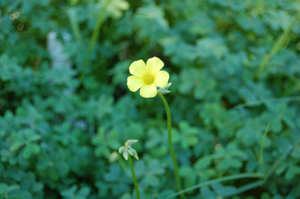I don’t generally buy stuff for myself this time of the year. I enjoy picking things out for people in my life or making the thing(s) myself. In fact there are a couple of scarves I should be working on at this moment and then there are the ubiquitous Basil baby blankets that need completed borders. 
The excuse here is that the combination of art and herbalism got to me. My copy of the Druid Plant Oracle arrived today. It wasn’t available locally so I can’t say I ran out and bought it but had to run to my computer, order online and wait.
First off, I’m not an experienced tarot reader (and this isn’t actually a tarot deck). I have my well-worn SMITH-ryder-waite deck for personal use and that’s the extent of my experience.
Secondly, I know next to nothing about Druids, ancient or modern.
But I think I can say I have a decent grasp of dye plants and am interested in botanical pharmacology. Included among the images are plants any dyer would love: Madder, Woad, Plantain and Yarrow. Before I saw the leaves, I thought the image on the cover was Oxalis but it’s Primrose. Lots of the standard medicinals: Clover (Red), Chamomile, Comfrey and the like.
Good bibliography and a list of plants by common, Gaelic and botanical names. And the images are gorgeous. (Can’t emphasize that part enough.) Also included are three blank cards so you an add your own plants. (Right now I think I’m planning on Fennel, Oxalis and Cotton.)
Got an herbalist or dyer in your life? Perfect gift. If the herbalist/dyer is into Celtic history and mythology, even better. And the images are gorgeous.
Deck developed by: Philip and Stephanie Carr-Gomm.
Illustrations by: Will Worthington.
They also designed a Druid Animal Oracle deck and a Celtic themed tarot. 
What is the deck like to read with? Don’t know (yet). I’m still into the accompanying book. Perhaps see the review over at the Aeclectic Tarot site.
However, if my maternal grandmother is an example, one can read with any sort of deck, even a standard playing card set that has a weird poodle design on the backs.
Here is the back story. My mother’s mother was not into anything remotely metaphysical or new age-ish. She was a fanatically conservative Catholic slightly to the right of Savanrola (alternatively see Spanish Inquisition). But bizzarly, conversely, she also “read”, if you can call it that, from the afore mentioned standard playing cards.
As far as I could tell, she did not read using any traditional method or symbol set. They functioned as a jumping off point when she was inclined to pick up things. At that she was annoyingly accurate. Her readings occasionally precipitated a phone call from my mother. Usually because my grandmother – should she think something was up with me – would badger her daughter (my mother) until Mom called me to check in.
So, long digression aside, yes – if it fits your practice you probably can read with this deck. And the images are gorgeous.

